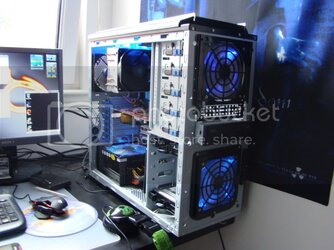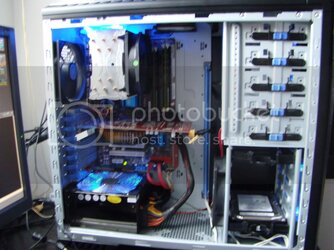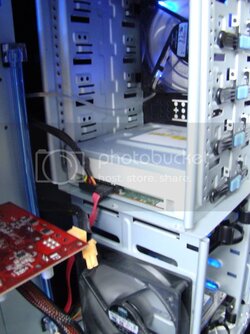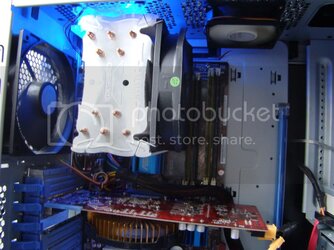- Joined
- Nov 15, 2010
- Location
- Livingston, Scotland
Hey all. Ive been noticing that my graphics card (hd4850) is running particularly hot recently. Now theres been no change to my system which generally runs rather cool. My cpu (q8200 oc to 2.9) generally idles between 29 - 31 degrees and under load is in around 37 - 42 degrees. Now for my graphics card, it used to idle at around 45 degrees and load at 56. however now, its idleing at 53 and under load is hitting the high 70's.
I was wondering if anyone could see anything i could do to the airflow in my case to help cool my card a bit more.
I have put images below to show my current fan status and airflow.

^^ Front panel off

^^ side. Note the 2 fans on the top are extractor fans as is the rear fan


If anyone can see anything i can do to help my airflow please let me know as im getting worried about my temps for my gfx card.
I was wondering if anyone could see anything i could do to the airflow in my case to help cool my card a bit more.
I have put images below to show my current fan status and airflow.

^^ Front panel off

^^ side. Note the 2 fans on the top are extractor fans as is the rear fan


If anyone can see anything i can do to help my airflow please let me know as im getting worried about my temps for my gfx card.
